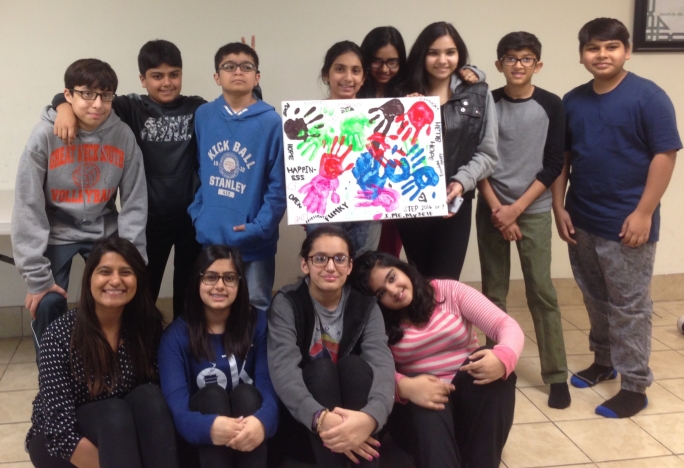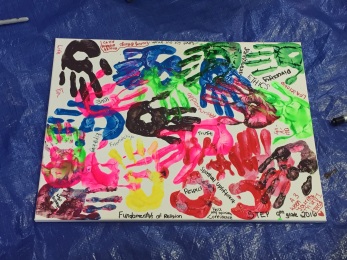Sehrish Shikarpurya is currently a doctoral student studying special education. She completed this research in 2016 in a religious education classroom in New York, United States. For her MTeach degree at the Institute of Education, London (now the UCL Institute of Education), she explored the impact of differentiated instruction using two specific approaches: tiered tasks and flexible grouping. Differentiation is a learner-centered approach that aims to teach pupils according to how they learn best. Although there are many tiers to differentiation, research has mainly focused on assessment and content. This means that educators have found strategies to provide a ‘menu’ of assessments and how the content is formulated. Ms Shikarpurya’s study highlights two main approaches to differentiate the delivery of the content to understand its impact on student learning. Her study suggested that differentiated instruction resulted in a strengthened classroom community, increase in student motivation, focus on student voice in the classroom, and a postive impact elswhere in a range of learning contexts. Differentiated instruction not only impacts pupils’ learning of specific subjects, but it also improves overall success.
 Due to my background in special education, I noticed the diverse student experiences and needs in London supplemenary education classrooms: children with visible and invisible needs were not necessarily taught in a manner that would best support their learning. For example, the pupils I observed were mostly taught lecture-style, with the teacher as the focus, and with few activities that allowed for interaction. The one-size-fits-all model does not work in today’s classrooms, and differentiation could help support all learners in their endeavours. Increasing student diversity requires us, as educators, to be prepared to teach children with varying needs, experiences, cultural backgrounds, and abilities. Differentiated instruction is an approach that can support diverse learners, and help them succeed.
Due to my background in special education, I noticed the diverse student experiences and needs in London supplemenary education classrooms: children with visible and invisible needs were not necessarily taught in a manner that would best support their learning. For example, the pupils I observed were mostly taught lecture-style, with the teacher as the focus, and with few activities that allowed for interaction. The one-size-fits-all model does not work in today’s classrooms, and differentiation could help support all learners in their endeavours. Increasing student diversity requires us, as educators, to be prepared to teach children with varying needs, experiences, cultural backgrounds, and abilities. Differentiated instruction is an approach that can support diverse learners, and help them succeed.
The purpose of my research was to deepen my understanding of the impact of two specific differentiated instructional methods: tiered tasks and flexible grouping. ‘Tiered tasks’ provide pupils with several pathways to reach the same instructional goal: for example, I created worksheets for learners that varied in complexity, and created a range of tasks with a range of learning outcomes, and these were distrubted around the classroom, with tasks arranged in order in progressive complexity. Flexible grouping is an approach that encourages teachers to vary groupings between assigned or chosen groups to complete certain instructional tasks: in my classroom, therefore, I switched between teacher-assigned groups and and pupil-chosen groups each week, including each time a group activity to construct learning of the content (rather my teaching it by precept or instruction).
After implementing tiered tasks and flexible grouping for ten weeks in a seventh grade classroom, I found that these approaches not only impacted postively student learning, but they were instrumental in increasing classroom community, adding to student motivation, developing pupil voice, and apparently making their learning generally more transferable across varying contexts. The data was collected using focus group and individual interviews, classroom observations, pre- and post-intervention questionnaires, and a learning styles inventory. The diverse forms of data collection facilitated the depth to which I could understand the impact of the interventions.
 During the research, I also learned that simply implementing two instructional differentiation strategies did not provide the students with the holistic approach to their education that I desired for them. In consequence, I started to explore other forms of differentiation that could benefit the learners further, such as visual curation of instructional tasks, differentiation of assessment through the use of technology, and including the exploration of art and expression as a way to differentiate the content. Adding these methods really opened the young people to new and diverse ways for them to learn, and meant that they were encouraged to seek more opportunities to enhance their learning.
During the research, I also learned that simply implementing two instructional differentiation strategies did not provide the students with the holistic approach to their education that I desired for them. In consequence, I started to explore other forms of differentiation that could benefit the learners further, such as visual curation of instructional tasks, differentiation of assessment through the use of technology, and including the exploration of art and expression as a way to differentiate the content. Adding these methods really opened the young people to new and diverse ways for them to learn, and meant that they were encouraged to seek more opportunities to enhance their learning.
The flexible grouping had a significant effect in creating a positive classroom community: pupils noted that their instructional tasks had brought them together, stating that their negative perceptions of each other disappeared after they had been provided with multiple opportunities to ‘find answers’ with their peers,. Additionally, students had also expressed an increase in their motivation due to some friendly peer-to-peer competition, and the active nature of the methods, which all helped them learn.
In conclusion, I argue that it is important to remember the following things about differentiation:
- every person learns differently, and, therefore, classes need to be taught using a range of contrasting methods;
- differentiation is good not just for learning but also for holistic development and success;
- collecting information from learners (through a method such as a learning inventory) can really support the teacher in designing their instruction, content, and assessment to meet the needs of each student.



